Did you know that Arowana fish can grow over three feet long and require tanks that are at least 150 gallons to thrive? Yes, you heard it right. In the realm of aquarium hobbies, Arowana tank size is one of the most crucial factors for ensuring these majestic creatures’ well-being.
Arowana fish are celebrated for their prehistoric lineage and cultural significance, often symbolizing prosperity and good fortune. This makes them highly coveted among dedicated aquarists. However, Arowana fish care is not for beginners. With large tank requirements, specific water parameters, and a carnivorous diet, these fish present a rewarding challenge for the experienced hobbyist. Potential caretakers must diligently monitor water quality, diet, and overall tank maintenance to nurture and sustain these fascinating fish, which can live for over two decades with proper care.
Table of Contents
Arowana Fish Care: Key Takeaways
- Arowanas can grow over three feet long, requiring tanks of at least 150 gallons.
- These fish are symbols of prosperity in various cultures.
- Arowana care is best suited for experienced hobbyists due to specific care needs.
- Maintaining optimal water quality and diet is crucial for their health.
- With proper care, Arowanas can live for more than two decades.
Overview of Arowana Species
Arowanas span various species spread across tropical regions. The Silver Arowana and Jardini Arowana are among the most popular choices for aquarium enthusiasts. They are characterized by their sleek, elongated bodies and barbels, which help them sense their environment. Known for their powerful jumping capabilities, these fish require secure tank setups to prevent escape.
Importance and Symbolism in Cultures
The Arowana cultural symbolism is profound, particularly within Asian societies. The Asian Arowana, often referred to as the “dragon fish,” is believed to bring prosperity and good fortune. Its vibrant scales and serpent-like appearance resonate with symbols of wealth and power. This belief elevates the status of Arowanas, making them sought-after both as pets and status symbols within the aquarist community.
Arowana Tank Setup
Creating an optimal environment for an Arowana is crucial for their well-being and longevity. Their large size and active nature demand particular attention to the Arowana tank setup, which should replicate their natural habitat as closely as possible.
Choosing the Right Enclosure
When selecting an Arowana enclosure, it is essential to opt for a tank with a volume of at least 150 gallons. A larger footprint is preferred over height, providing ample swimming space for these agile fish. This spacious environment will accommodate their size and activity level, minimizing stress and promoting healthy growth.
The Necessity of a Secure Tank Lid
A secure tank lid is paramount to prevent your Arowana from escaping. These fish have a formidable jumping ability, and an unsecured lid can lead to unfortunate accidents. Always ensure the lid is both tight-fitting and sturdy to keep your Arowana safely contained.
Ideal Substrate and Decorations
Choosing the right substrate and decorations can significantly impact the aesthetics and functionality of your Arowana tank setup. If live plants are included, opt for a substrate that supports plant growth. Otherwise, smooth gravels or sand are ideal. Decorations should be free of sharp edges to avoid injuring your fish. Adding driftwood and large, smooth rocks can provide a natural look while offering hiding spots and reducing stress.
| Consideration | Recommendation |
|---|---|
| Tank Size | 150 gallons minimum |
| Tank Lid | Secure and sturdy |
| Substrate | Smooth gravels or sand |
| Decorations | Driftwood, large smooth rocks |
| Tank Mates | Large, non-territorial species |
Choosing appropriate Arowana Tank Mates is vital in minimizing aggression. Larger, non-territorial fish are suitable companions, reducing stress and promoting a harmonious environment within the aquarium.
Arowana Diet and Nutrition
A critical element of Arowana care is ensuring the fish receive a balanced and nutritious diet that supports their robust growth and health. The Arowana diet must be tailored to their carnivorous nature, with a strong emphasis on high protein content.
Feeding Young vs. Adult Arowanas
Feeding regimens for Arowanas vary significantly based on their age. Younger Arowanas, due to their fast growth rate, require more frequent feedings, typically 2-3 times per day. These feedings should include appropriately sized portions of live and frozen feeds. On the other hand, adult Arowanas can be fed once per day or every other day, depending on their individual appetite and activity level. This feeding schedule helps to manage their metabolic needs efficiently.
Recommended Types of Food
Providing a variety of suitable food items is essential for achieving a well-rounded Arowana nutrition plan. The primary components of their diet should include:
- Floating pellets
- Freeze-dried or frozen fish
- Insects
- Krill
- Shrimp
These food items are rich in the necessary proteins and nutrients that Arowanas need to thrive. Incorporating such diversity ensures that they receive a balanced diet, promoting optimal growth and maintaining their vibrant health.
To present this information visually, I have included a comprehensive table below that outlines the dietary requirements for both young and adult Arowanas:
| Nutrient Needs | Young Arowana | Adult Arowana |
|---|---|---|
| Feeding Frequency | 2-3 times daily | Once per day or every other day |
| Recommended Food | Live feed, Floating pellets, Freeze-dried insects | Frozen fish, Krill, Shrimp |
| Protein Content | High | High |
By understanding and implementing a well-structured Arowana diet and Arowana nutrition plan, caretakers can greatly enhance the wellbeing and longevity of these majestic fish. The right diet is the cornerstone of their continued health and impressive growth.
Water Parameters for Arowana Fish
Ensuring the proper arowana water parameters is vital for keeping your arowana fish healthy and thriving. These fishes are particularly sensitive to their aquatic environment, requiring consistent monitoring and adjustments to water conditions.
Optimal Temperature Range
The ideal temperature for arowanas should be maintained between 72–82°F. Consistently staying within this temperature range will help prevent stress and encourage a healthy metabolism.
pH Levels and Water Hardness
Maintaining appropriate arowana water quality involves controlling the pH levels and water hardness within certain limits. The pH levels should be kept between 6.0 and 7.0, while the ideal water hardness ranges from 1 to 8 dKH. Regular testing is necessary to ensure these parameters remain stable.
Nitrate, Nitrite, and Ammonia Levels
To maintain optimal health for arowanas, it is essential to keep nitrate, nitrite, and ammonia levels in check. Ammonia and nitrite should be at zero, while nitrates should remain below 40 ppm. This can be achieved through regular water changes and using high-quality filtration systems. Consistent testing and maintenance are key to preserving excellent arowana water quality.
| Parameter | Optimal Range |
|---|---|
| Temperature | 72–82°F |
| pH | 6.0–7.0 |
| Water Hardness | 1–8 dKH |
| Ammonia | 0 ppm |
| Nitrite | 0 ppm |
| Nitrate | < 40 ppm |
Selecting Arowana Tank Mates
Choosing the right tank mates for Arowanas is essential to maintain a peaceful and healthy aquarium environment. When considering potential companions, one must opt for compatible species that can coexist harmoniously with Arowanas.
Compatible Species
Ideal Arowana tank mates are larger, similarly aggressive fish that can withstand the dominant nature of Arowanas. Some compatible tank mates include the clown knifefish, oscars, and green terrors. These species are robust and can minimize stress within the aquarium by standing their ground, reducing the chances of confrontation.
Managing Aggression and Stress
Managing Arowana aggression is paramount to maintaining a balanced tank. Avoiding smaller fish that could incite predatory behavior is crucial. When selecting Arowana tank mates, consider those that can match or exceed the Arowana’s size. This approach helps in managing Arowana aggression, reducing the likelihood of stress-induced fights. Implementing hiding spots and ensuring ample space also contributes to a harmonious environment.
| Species | Characteristics | Compatibility with Arowana |
|---|---|---|
| Clown Knifefish | Peaceful, large size, nocturnal | High |
| Oscars | Territorial, similar aggression level | Medium |
| Green Terrors | Aggressive, durable | Medium |
By carefully choosing suitable Arowana tank mates and actively managing Arowana aggression, one can create a more stable and serene aquatic environment conducive to the wellbeing of all inhabitants.
Maintenance Routines for Arowana Tanks
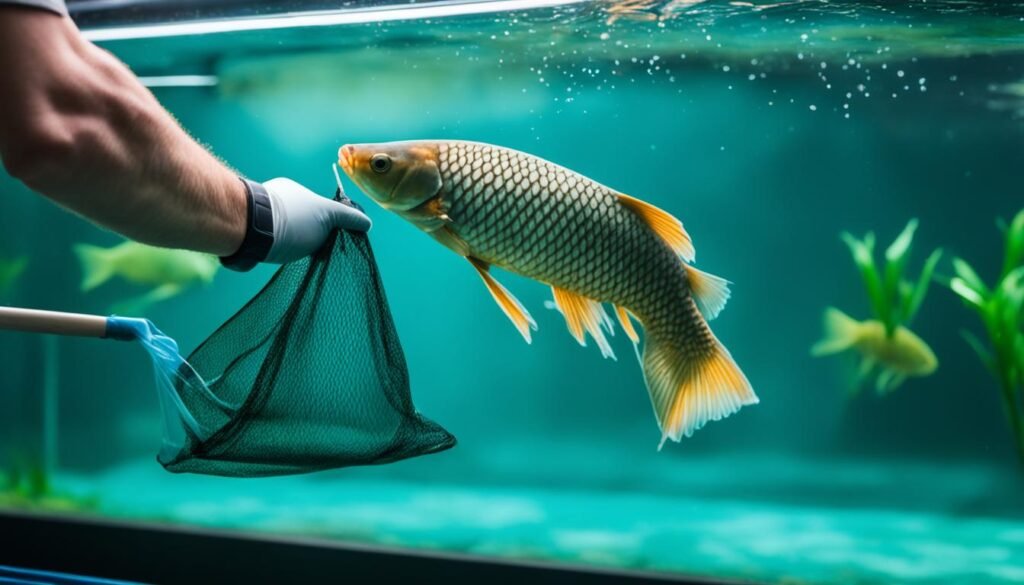
Maintaining arowana tanks requires consistent effort and attention to detail. Regular routines not only ensure a healthy environment for the fish but also help in extending their lifespan. Below are key practices to cover the basics of arowana tank maintenance.
Regular Water Changes
Water changes are vital for maintaining water quality. I recommend changing 20-30% of the tank’s volume on a weekly basis to keep the environment fresh and free of toxins. This practice helps in removing waste products and replenishing essential minerals.
Cleaning and Maintaining the Tank
Thorough cleaning is another crucial element. Safely scrub the tank surfaces to avoid algae buildup and inspect the filter system to ensure its proper functionality. Additionally, any tank décor should be removed and cleaned periodically to prevent mold and bacterial growth.
Monitoring Water Quality
Regularly use test kits to monitor the water quality. Ensuring that pH, ammonia, nitrite, and nitrate levels are within safe limits is essential in maintaining arowana tanks. Maintaining these parameters helps avoid health risks associated with poor water quality.
Arowana Fish Diseases
Arowana fish, known for their elegance and distinctiveness, require meticulous care to maintain optimal health. Understanding common diseases, preventive measures, and effective treatments can help keep these magnificent creatures in peak condition.
Common Ailments
Arowana diseases often manifest due to suboptimal water conditions and stress. Common ailments include cloudy eyes, protruding scales, and the more severe rotting gill disease. Each of these conditions can severely impact arowana fish health if not addressed promptly.
Prevention Strategies
Preventing Arowana diseases revolves around maintaining excellent water quality and minimizing stress factors. Key strategies include:
- Providing adequate tank space to reduce stress.
- Maintaining optimal water temperature and pH levels.
- Ensuring a nutritious diet to boost immunity.
Treatment Options
If an Arowana disease does emerge, swift and appropriate treatment is crucial. Effective methods generally involve:
- Performing regular water changes to improve water quality.
- Utilizing medications designed specifically for fish diseases.
- Adjusting the tank’s temperature to create inhospitable conditions for pathogens.
Arowana Lifespan and Growth
Arowana fish are known for their impressive longevity, often living anywhere from 10 to over 20 years when properly cared for. This extended lifespan is a significant aspect that draws many aquarists to this remarkable species. However, reaching their full lifespan potential requires diligent care and the right environmental conditions.
Average Lifespan
The average lifespan of an Arowana can vary depending on several factors. In optimal conditions, you can expect your Arowana to thrive for decades. Essential elements that contribute to a long and healthy life include maintaining clean water, providing a diverse and nutritious diet, and ensuring that the tank setup is spacious and well-maintained. These practices not only extend the life expectancy of Arowanas but also enhance their overall quality of life.
Factors Affecting Growth Rate
Growth rate is another crucial factor in the care of Arowanas. These fish exhibit rapid growth, particularly within the first year of life. They can achieve an adult size exceeding three feet, making adequate tank space a necessity. Proper nutrition plays a pivotal role in supporting this robust growth. A diet rich in protein, including live and frozen foods, caters to their carnivorous nature and fuels their development. Additionally, consistent water quality checks and maintenance are indispensable, as poor water conditions can stunt growth and lead to various health issues.
In conclusion, ensuring your Arowana reaches its full potential in terms of lifespan and growth involves a comprehensive approach. By providing a balanced diet, ample space, and consistently optimal water conditions, you create an environment where your Arowana can thrive for years to come, growing into the majestic specimen that is the hallmark of a well-maintained aquarium.
FAQ
What is the ideal tank size for an Arowana fish?
Can you explain the different species of Arowana fish?
What is the cultural significance of Arowanas?
How should I set up a tank for an Arowana?
Why is a secure lid necessary for an Arowana tank?
What substrate and decorations are ideal for an Arowana tank?
How often should I feed young vs. adult Arowanas?
What types of food are recommended for an Arowana?
What are the optimal temperature ranges for Arowana fish?
What pH levels and water hardness are ideal for Arowana fish?
How should I manage nitrate, nitrite, and ammonia levels in the tank?
What species are compatible as tank mates for Arowanas?
How can I manage aggression and stress in an Arowana tank?
How often should I perform water changes in an Arowana tank?
What maintenance routines should I follow for an Arowana tank?
What are common diseases that affect Arowanas?
How can I prevent diseases in Arowana fish?
What treatment options exist for sick Arowana fish?
What is the average lifespan of an Arowana fish?
What factors affect the growth rate of Arowanas?
References
Ornamental Aquatic Trade Association (OATA)
Convention on International Trade in Endangered Species of Wild Fauna and Flora (CITES)
I am a passionate aquarist with over 30 years of hands-on experience in fishkeeping. My journey began at a young age, collecting fish from the wild and learning through experimentation. Specializing in tropical fish, I bring a deep understanding of the hobby to FishKeepingMadeSimple. The site provides honest, detailed reviews of essential products and accessories to help fellow enthusiasts create the best environments for their fish.

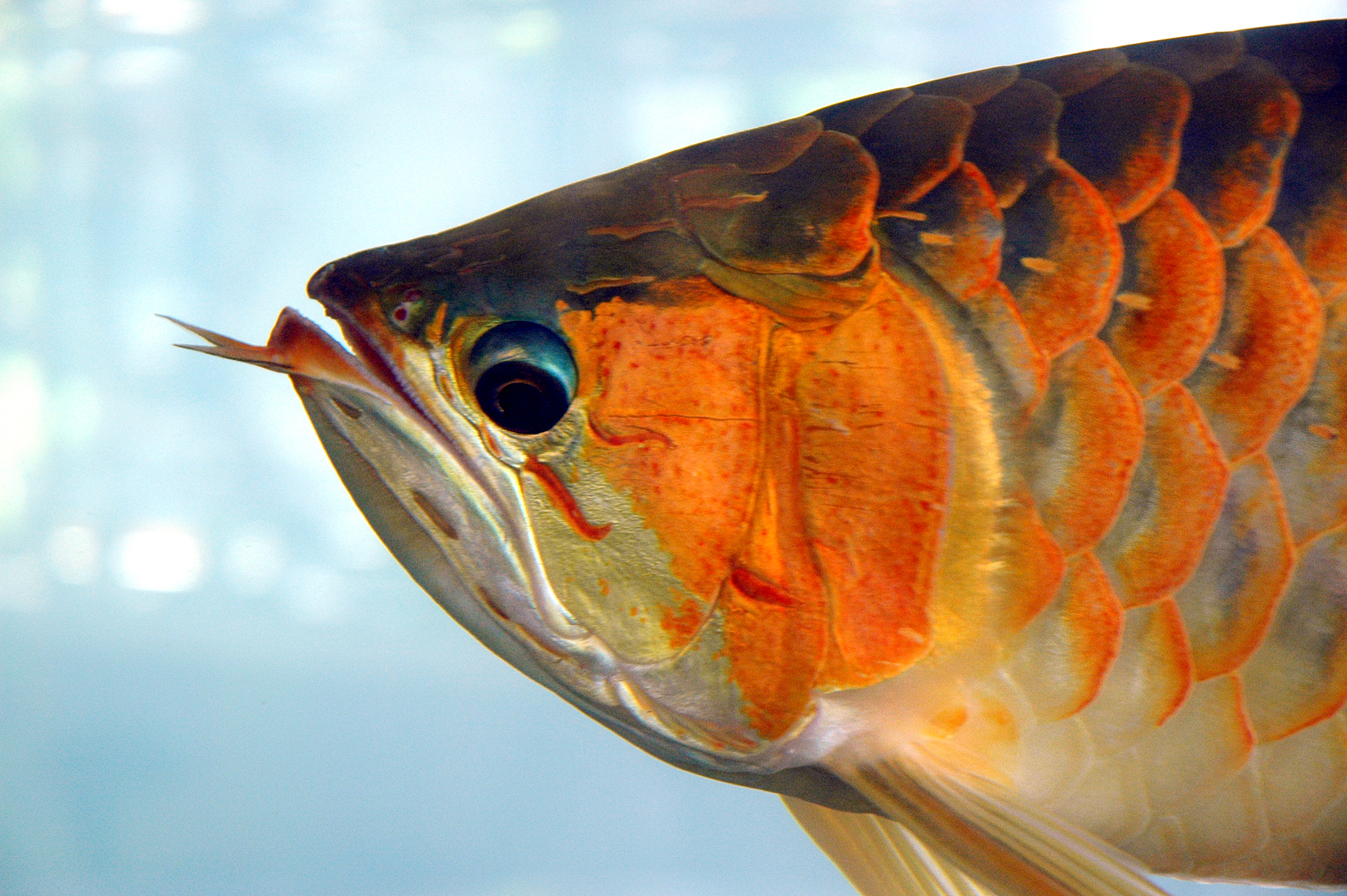
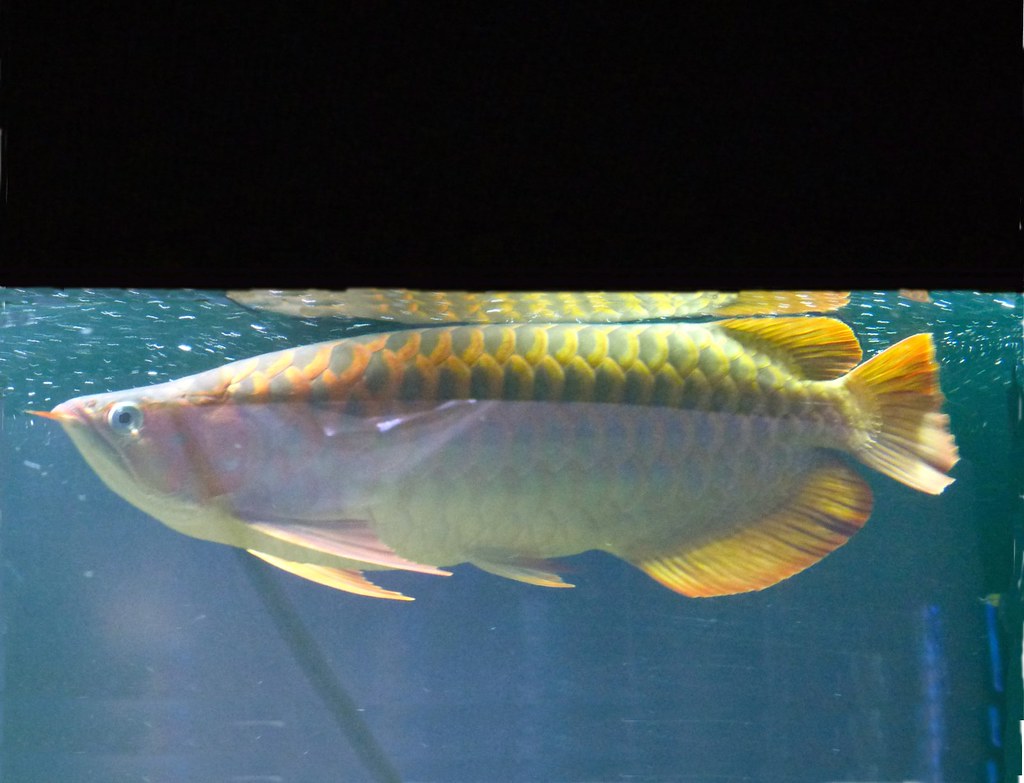

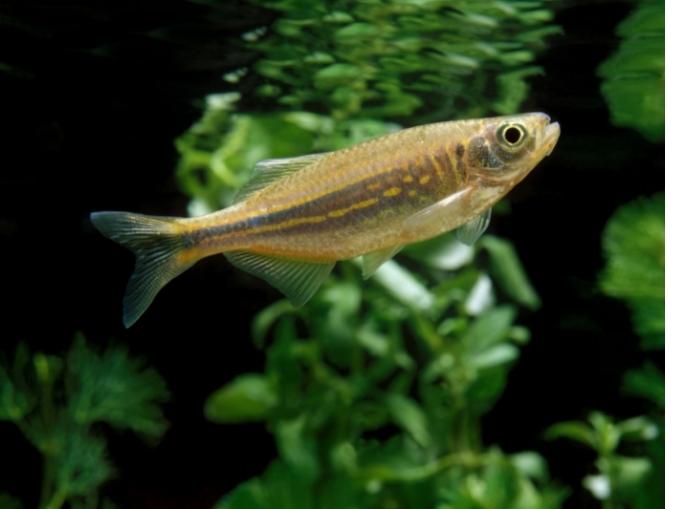
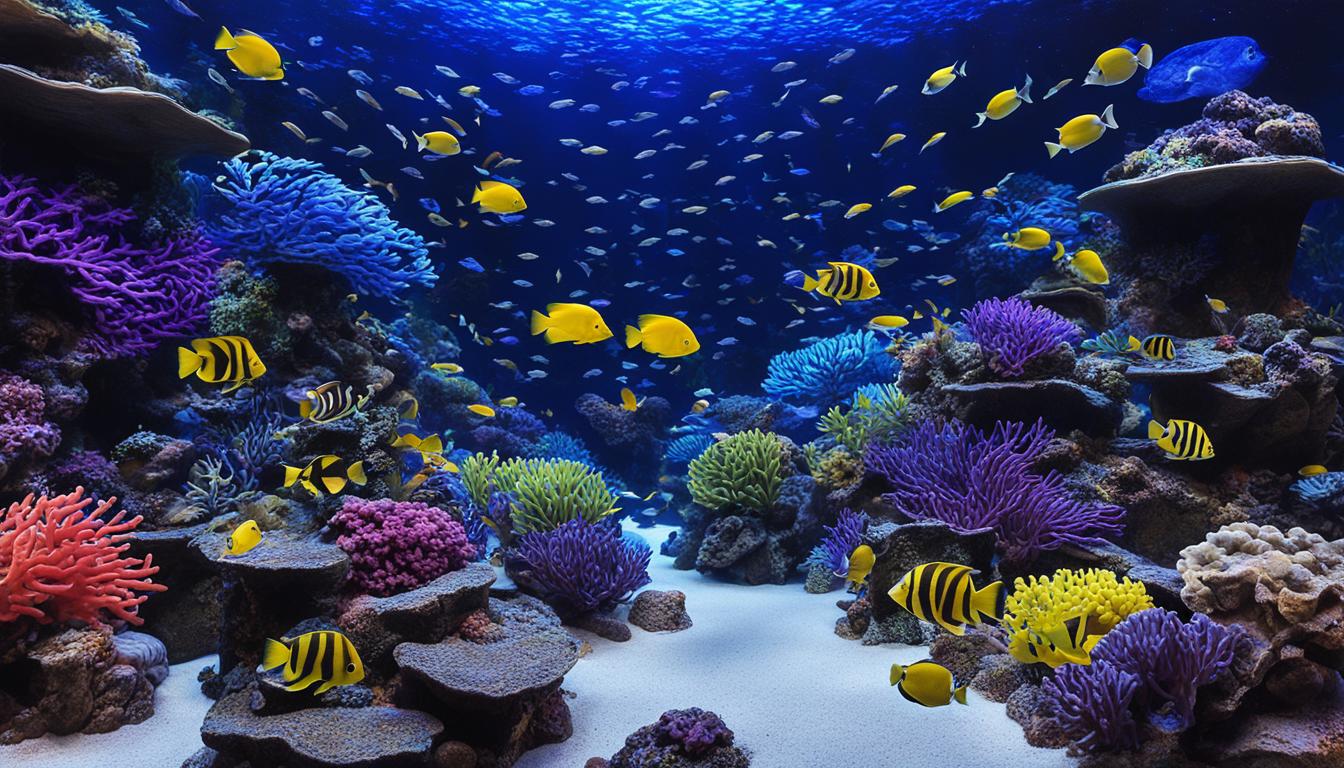
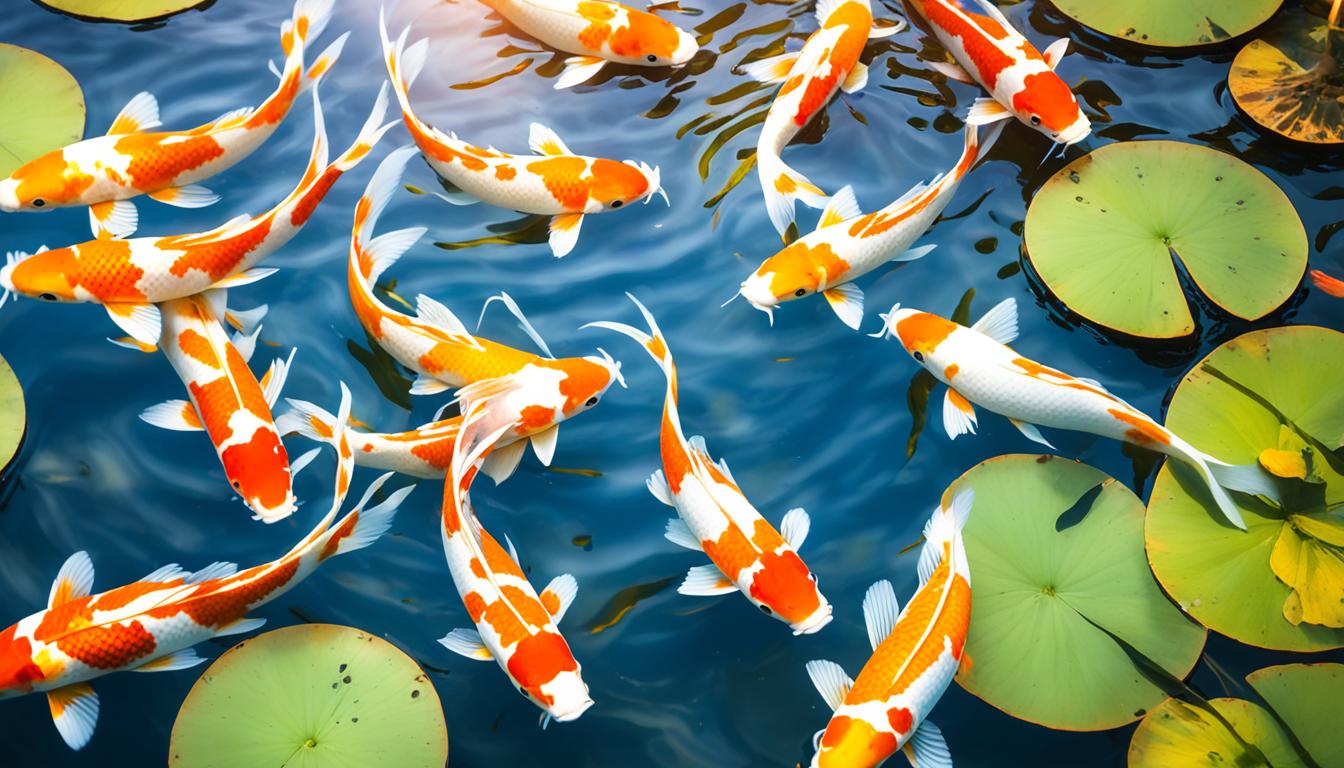

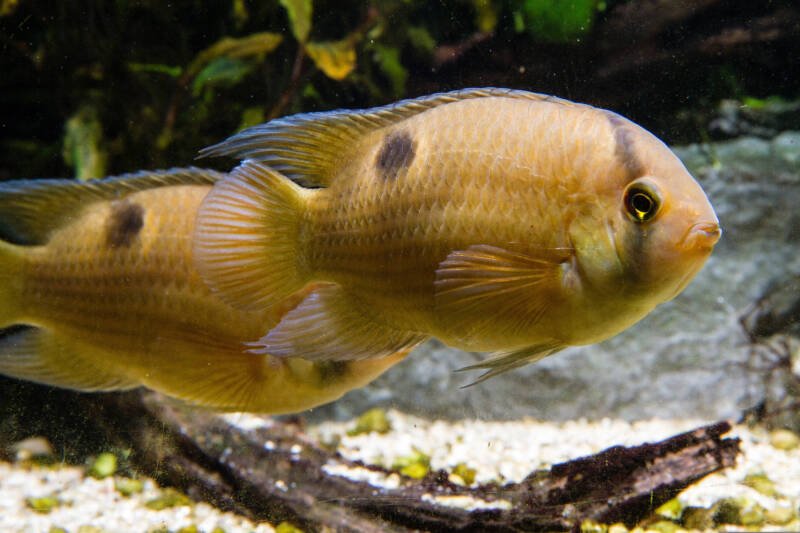
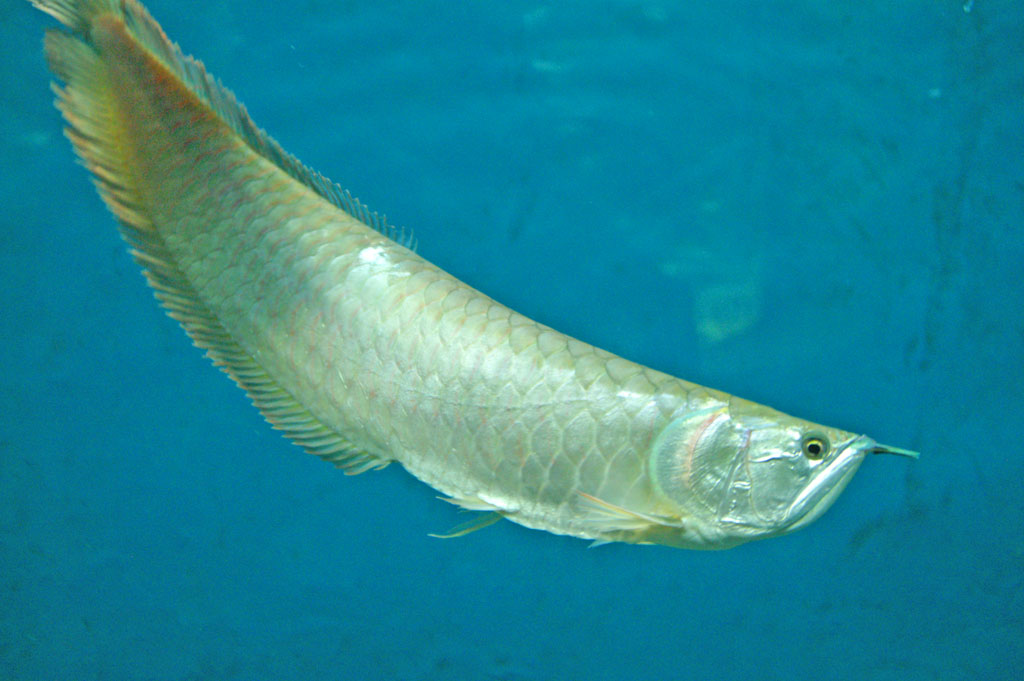
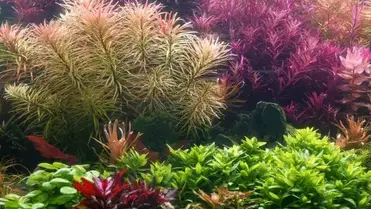
[…] If you are considering keeping Red Devils Fish as pets in your Austin, Texas aquarium, it is essential to understand their care requirements to ensure their health and […]
[…] water changes following best practices is essential to maintain water quality and promote fish […]
[…] the ideal tank setup is essential for the health and well-being of your swordtail fish. Providing them with the right tank size, decorations, and water parameters will help mimic their […]
[…] Once the eggs hatch and the fry become free-swimming, you will need to provide proper care for their development. Here are some essential tips: […]